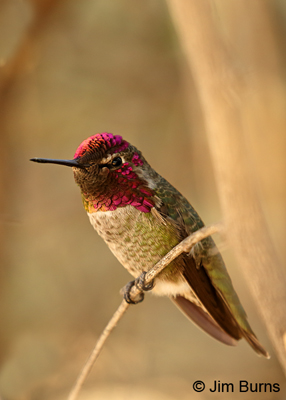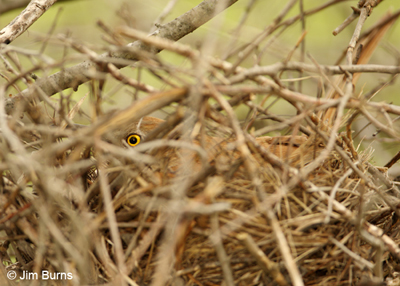
It’s been awhile since I wrote about bird photography, but I inadvertently found myself out in the desert recently, surrounded by several birders whom I didn’t know, all carrying cameras, most of them SWE--shooting without experience. Certainly no problem with that as it’s just a matter of time spent in the field, but watching them at work got me thinking about a couple bird photography myths I’d like to dispel.
MYTH #1: If the bird’s not in good light and you don’t have flash, don’t even bother.
An Anna’s Hummingbird was flitting around the group, flycatching, chasing other hummers, then reliably perching in a dense bush in deep shade to avoid the mid-afternoon sun on a hot day. When I pointed out the perch, the other photographers ignored me, waiting for something to tee up in the sun. When I looked through the lens, it was so dark in the bush it took a minute before I could even locate the hummer, but my autofocus finally locked on it. I was close, probably ten yards, but the bird was in a black hole and I could discern no color at all. The sun was behind me off to my left, but I noticed a sliver of reflected backlight.
I was intrigued. Why not? Here was a chance to be creative with a bird I had photographed hundreds of times in all kinds of light, including flash which I never use now and don’t even own anymore. The bushes precluded a perfect angle, but it wasn’t bad. Though everything was dark, the bird itself was a little brighter than the background, so keeping in mind the sliver of backlight, I bumped up to ISO 1600, went my standard f/8, underexposed 1/3, and took several shots. I saw enough color in the back of the camera I couldn’t wait to go home and get into Photoshop.
The best frame is the one opening this column. As Al McCoy would say, “Shazam!” Yeah, I wish the tip of the bill and the parts of the bird below the branch were tack sharp, but this turned out to be my favorite of all the Anna’s hummingbird shots I’ve ever taken. I called Deva in and we started grinning and naming off colors we saw from the purple-red-orange spectrum. The message here is this: pixels are cheap, be creative, take the shot even if the light’s not perfect . . . or if it’s not even good.
MYTH #2 If the bird’s in a tree or bush, don’t use autofocus.
It has always been a mystery to me why anyone with a lens capable of auto focus would not use it at all times. The excuse for manual focus is that birds perch in trees, trees have limbs, branches, and twigs, and the autofocus perversely catches on any and all of these, leaving the bird itself out of focus. There are four things that may circumvent this problem. I focus manually only as a last resort if none of these four works.
The first thing is use the lens on a tripod. If you’re shooting hand held through a tight window, it may be hard to keep the auto focus point centered through foliage clutter. The tripod will stabilize everything so if you do achieve auto focus it won’t be just momentary. Next, move and try to find a less obstructed focus path. A third, often overlooked solution, is to attach a teleconverter to the lens. Greater magnification may help the lens find and recognize enough contrast to lock on.
If all else fails, focus manually but then switch back to auto focus before shooting. This may seem either illogical or redundant, but many times I’ve focused manually only to discover on the computer my eye was a little off. Then again sometimes I think I’m right on manually, switch back to auto focus, and see a slight shift which is always a bit sharper. It’s as if focusing first manually puts the focal point close enough to the bird’s general area to allow the lens to then achieve sharp focus by itself. Both the Anna’s and the closing image of a Brown Thrasher on its nest were obtained in this way.
Both these photos are eye catching, pun intended, and both defy myths that I often categorize as “group think.” These shots both involved some luck, but luck is the residue of knowing your equipment, knowing your subject, time in the field, and thinking outside the box. Outside the box is where creative thinking begins. I hope you enjoy these two images.